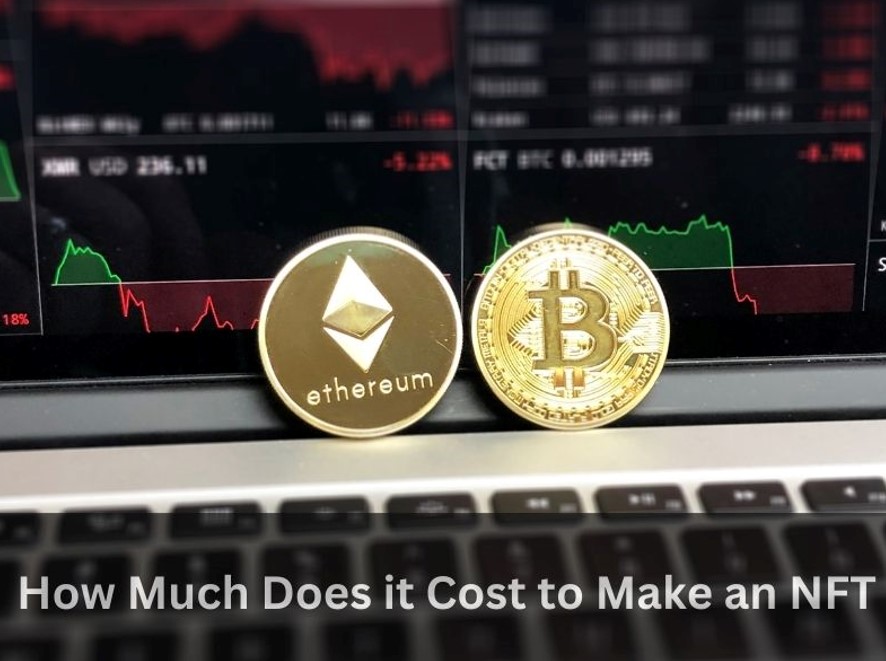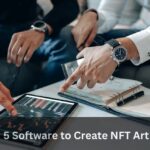NFTs, or non-fungible tokens, are digital collector’s items that have surged in popularity. They’re now sold for millions of dollars at auction houses and beyond.
NFTs are a new type of token that’s unique on the blockchain and cannot be traded for another one. This creates scarcity, which increases their value per unit of demand. Here we will discuss about how much does it cost to make an nft ?
Initialization fee
NFTs, or non-fungible tokens, have been on a rise in the crypto and blockchain world. This is because they’re unique tokens on a specific blockchain that cannot be replaced by another.
NFT creation and minting costs vary according to the blockchain that you use. The most popular blockchain is Ethereum, but it’s not the only option. Other blockchains, such as Solana and Polygon, can also be used for making NFTs.
First, you need to determine the type of smart-contract that will be used to create your NFTs. Then, you need to choose the marketplace on which you want your NFTs to be listed. Some NFT marketplaces allow you to list your tokens for sale for a fixed price or in an auction.
When you’re ready to sell your NFT, you need to pay an initialization fee before you can start listing them for sale. This fee varies by NFT marketplace and the blockchain that you’re using, but most of them charge $70 to $300 for this process.
The NFT marketplace will then use a smart-contract to create and verify the NFTs for sale. This is the most important step because it ensures that each sale is a legitimate transaction and that you’re not creating fake NFTs or selling counterfeit digital art.
Depending on your smart-contract, you can either list your NFTs for a fixed price or put them up for auction. You’ll also need to pay a sales fee, which varies by the NFT marketplace.
For example, OpenSea charges 2.5% of your NFT’s sale price when you sell it on their platform. Rarible also charges a 1% service fee on fixed-price sales and a 5% commission on auction sales.
In addition to the initialization fee, creators will also need to pay gas fees when they mint their NFTs. These fees are a crucial component of the NFT-making process, as they’re necessary for verifying and processing all transactions on the blockchain.
However, gas fees don’t affect the price of an NFT. In fact, they can even increase the price of an NFT if there’s high demand for it on the platform.
Gas fee
There are a number of factors that will determine the amount of money you will have to spend on making an NFT. These include the blockchain you use and the NFT’s design. But the biggest factor is probably gas fees – which can be significant when dealing with NFTs.
Gas fees are the cost of computing power needed to verify transactions on a blockchain. This is done by validators, or miners, and each blockchain has a different set-up.
Generally speaking, gas prices fluctuate depending on supply and demand. The higher the demand and the lower the supply, the more expensive it is to validate transactions. This can lead to high transaction costs – and the main cause of these high gas prices is called a “gas war.”
Some wallets will show you how much you need to pay for each of your transactions and give you the option to choose how fast you want to process them. You can also set your maximum gas limit. You can also choose to transact very early in the morning or late at night when there is less demand on the network.
Another way to minimize gas fees is by using a blockchain that doesn’t charge them up-front. Some examples of blockchains that don’t charge these fees are Cardano, Solana, and Wax.
In addition to lowering gas fees, utilizing a different blockchain can help reduce the number of miners and validators on the network. This can result in a faster chain and reduce overall processing time.
One way to lower gas fees is to list NFTs as a collection, instead of individually. This will reduce the number of miners and validators that are required to record NFTs on the blockchain.
Some NFT marketplaces also offer a method called “lazy minting.” This allows creators to list their NFTs for sale without paying the blockchain gas fee up-front.
However, it’s important to note that this method can take a long time. For example, a digital artist who lists an NFT on OpenSea will have to wait for it to be recorded on the blockchain before it’s available to buyers.
Metadata integration
Metadata is the data that makes an NFT a unique token. It tells people what the NFT represents and provides information like its name, description, and any special traits or features that can be associated with it.
When you make an NFT, you can specify the metadata in the smart contract, and it is stored on the blockchain network. This allows you to protect your digital assets from unauthorized changes and loss.
There are a few different methods for storing NFT metadata on the blockchain. One of the most common is to store it on a decentralized peer-to-peer file sharing system called IPFS. This solution is highly scalable and incredibly efficient. It is also completely decentralized, which means that no single entity has control over it.
Another option is to store NFT metadata on a centralized storage solution like Firebase Storage or Google Cloud Storage. However, this is not always a good option for all projects.
Moreover, it can be a costly endeavor to maintain a centralized NFT metadata storage solution. This is especially true if you need to update or add new NFTs often.
A third option is to store the NFT metadata on an encrypted file storage service like Redis or Bitshares. This approach is less expensive than a centralized solution but isn’t always ideal.
The metadata in an NFT can be referenced by a cryptographically uniform resource identifier (URI) that points to a website, IPFS address or other data location that the NFT app can resolve. This URI will help people find the NFT on the blockchain, but it may be unclear what the URI is pointing to if the NFT is ever traded or removed from the chain.
For instance, if the NFT in question is a game asset, the game developers might need to periodically update the URI of the NFT to account for successful quests or other events in the game. This might require a separate smart contract to be developed. This is why it is crucial to ensure that the URI points to a trusted resource.
Listing fee
When you’re making an nft, you need to consider several factors. These include data size, project quality, transaction speed, and gas fees (transaction fees on a blockchain).
Once you’ve established a cost estimate, it’s time to make your nft. The process involves uploading the digital asset file to a marketplace and minting it using the crypto currency supported by that marketplace. Minting can take a few days, depending on the amount of work involved.
After minting, you can list your nft for sale on a marketplace. This process can involve setting a price, waiting for interested buyers to make an offer, or starting an auction. Once an NFT is sold, the seller gets payment in the cryptocurrency specified in the listing.
The price you’re willing to sell your nft for is important to consider. If you’re selling an nft for a low price, it’s likely that you’ll be unable to get a good return on your investment.
One way to minimize the risk of losing money is to choose a marketplace with high conversion rates. This will help ensure that the NFT’s price increases over time as more people buy it.
When choosing a marketplace, you should also consider how much the platform charges for minting, listing, and trading. These fees can vary greatly from platform to platform, so it’s important to know your options before listing your nft on any marketplace.
Another important consideration is gas fees, which can add up quickly if you’re dealing with the Ethereum network. These fees are charged when transactions occur on the network, and they depend on the blockchain’s supply and demand.
For example, if the number of transactions on a blockchain increases, it can cause the gas fee to rise. Fortunately, there are tools that can help you determine how much gas fees will cost before you begin minting or selling on a particular blockchain.
Creating and selling NFTs can be a lucrative business. But it isn’t without its challenges. For instance, it can be difficult to find an audience for your nft. Additionally, the price of cryptocurrencies can fluctuate, affecting the value of your NFT.


